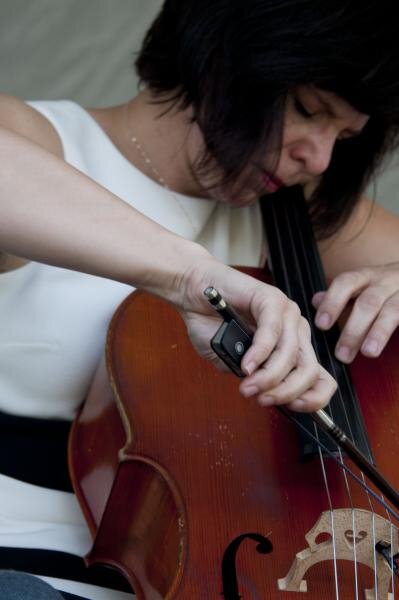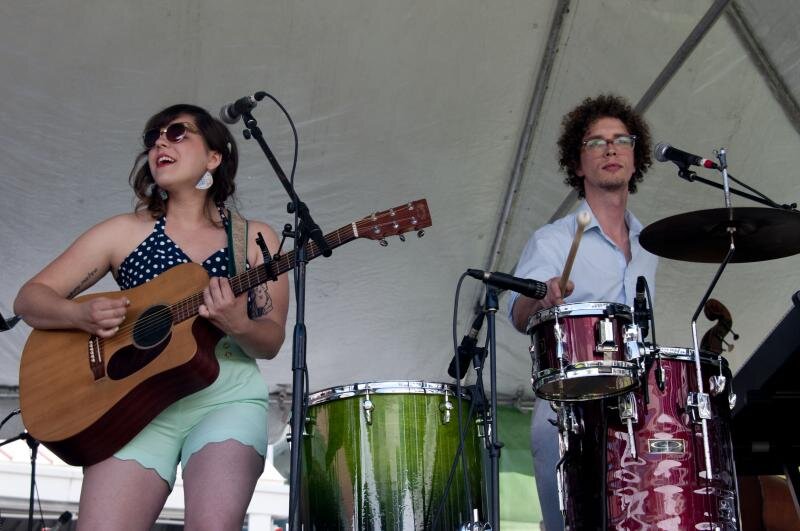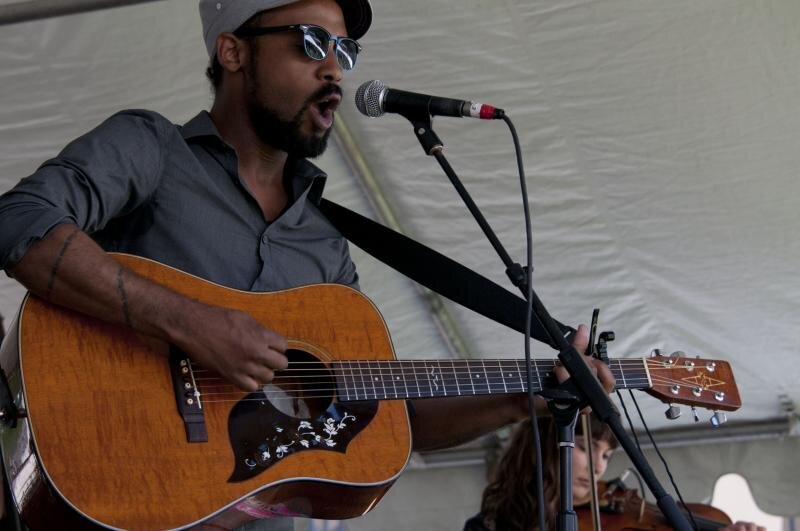Jazz Fest Review: Springsteen Echoes Springsteen

At the Fair Grounds, Bruce Springsteen was good value.
Well before he took the stage shortly after 4:15 p.m., Saturday at Jazz Fest was about Bruce Springsteen. Those who arrived at the Fair Grounds in the first hour encountered heavy crowds as people got to Jazz Fest early with the hopes of setting up camp on the Acura lawn. As a result, by the time Allen Toussaint performed on the stage at 12:45 p.m., people were already claiming track space.
Part of the desire to camp for Springsteen is that for fans, Jazz Fest tickets are bargain. People complain about festival ticket prices, but at Springsteen’s next stop in Woodlands, Texas, tickets start at $71 and buyers don’t get the rest of a festival for the price of admission. Tickets a less established act like Foster the People, which played opposite Springsteen on the Samsung Galaxy Stage still cost $70 or more in other venues. Whether such acts belong at Jazz Fest is one debate; the logic of camping out to see Springsteen at the easiest ticket on the tour is another.
For me, the show was too familiar to thrill. It’s sweet that Bruce Springsteen still wants to hearken back to 2006 and play songs from We Shall Overcome: The Seeger Sessions, but recent shows have included covers of AC/DC’s “Highway to Hell” and The Clash’s “Clampdown,” and a song he gave to Southside Johnny and the Asbury Jukes - “Hearts of Stone.” Some of that would have given some distinction to a set that seemed awfully familiarr.
The biggest surprise came when John Fogerty came out to join Springsteen on the exciting “Green River” and the crowd-pleasing “Proud Mary.” The former was better rock ’n’ roll; the latter sparked a sing-along.
Springsteen also brought singer Rickie Lee Jones on stage, but that was less successful. She has moved to New Orleans, and when called onstage, she situated herself next to Patti Scialfa. But when Springsteen drew attention to her during “Jesse James,” it was clear she didn’t know the words. Backing vocals were rarely audible throughout the show, so she was more a presence than a contributor.
From where I was standing, the show’s sound was dismal for most of the set. Evidently you can see Springsteen relatively cheaply, but hearing him costs money. Reports had said that Tom Morello’s contributions on the tour had been stellar, but he was only audible on “The Ghost of Tom Joad,” when he blazed through a solo that showed off many of his techniques and tricks. It didn’t help that the E Street Band is huge, often with four guitars, five horns, backing vocalists, a fiddle player, and a piano player before Jones was added to the mix. That much sound has to create some sonic murk, but Springsteen’s lead vocal and the treble sounds were the only ones that could be consistently heard.
It’s not right to say the show was slow or uninteresting because it was very obviously a crowd pleaser, and it was well played with integrity and class. But the show lacked distinction - something that would have been less of an issue had there been more time between shows. But at his third show in eight years and second in two, “O Mary Don’t You Weep” and “When the Saints Go Marching In” don’t have the same pop that they’ve had in the past.
Also on Saturday:
- It took nine people to balance Henry Butler in the Blues Tent, but the Butler, Bernstein & the Hot 9 set often cast Steven Bernstein’s band in the role of counterweight to Butler’s effusive style on piano. Material for the set leaned toward R&B and less the traditional jazz tunes played on the upcoming Viper Drag, which suited the local setting just fine. In the Blues Tent, Butler’s still a hero, and songs such as “Dixie Walker” and “Henry’s Boogie” gave him ample room to move. On those compositions, the Hot 9 referenced his lines to build parts with their own logic, but the set ended with “Big Chief” with Allen Toussaint making a guest spot, and “Iko Iko,” which were piano showcases first, band second. They were still good, but the relationship felt less equal and the pieces were the less for it. For more, see my review at The New Orleans Advocate.
- Part of the beauty of Helen Gillet's Saturday morning set on the Lagniappe Stage was how satisfying her pieces were in their first notes, and how organically they grew into richer, more involved pieces. But for one song, she looped sparingly, keeping things minimal. Gillet only really built layers for a solo section that she let go when she got back to the verse - a reminder that the looping is also a musical choice, not a necessity.
- There’s something charmingly homemade about the music of Alexis and the Samurai. Even when other musicians join them (as a few did on the Lagniappe Stage), the songs seem like windows into Alexis Marceaux and Sam Craft’s world, complete with in-jokes and moments that are perfect because they’re perfectly them.
- I also reviewed Micah McKee and Little Maker for the Advocate. It reads in part:
When Micah McKee and Little Maker played Louis Armstrong on the Lagniappe Stage, they selected “(What Did I Do to Be So) Black and Blue.” They treated it not as sacred text but as a smart, well-crafted song, one that also had significant gravity.









